Estimated reading time 14 minutes, 45 seconds.
It’s an airline, but not the kind you might imagine. The pilot wears shorts and a ball cap. Passengers chat on the dock amidst pallets of cargo.

It’s a common sight in British Columbia, where much of the rugged and breathtakingly scenic coast is accessible only by floatplane. From its base in Campbell River, Vancouver Island Air (VIA) is among the specialized air carriers that can take you wherever you need to go in coastal B.C.
Bobbing at the end of the company’s dock is a Turbine Otter, manufactured in 1956. The vintage of the airplane may come as a surprise, but VIA finds the Turbine Otter to be the best choice for its operation. In fact, the installation of a new, more powerful and more efficient turboprop engine was just the recipe to update the venerable Otter.
Skies was invited to fly VIA’s latest variant of the Turbine Otter, and found that despite its age it represents the state-of-the-art in bush flying.
Besides, the Turbine Otter is virtually VIA’s only option.
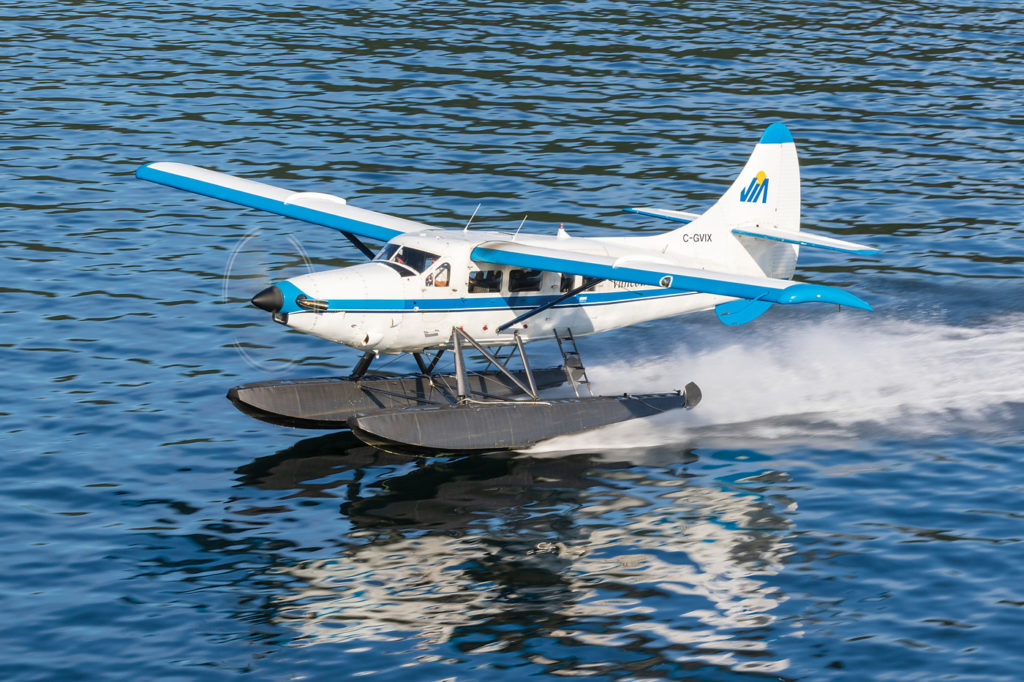
Shelves are bare at the bushplane showroom
Options weren’t always so scarce in the bushplane market. There was a time when Cessna was cranking out tough little taildraggers, Pilatus was building the Porter, and de Havilland Canada understood that Canadian airplanes were designed to operate in Canada, where lakes and rivers outnumber runways by a fair margin.
Beavers, Otters and later Twin Otters are a proud legacy of the Canadian need to negotiate some pretty tough terrain.
Today, about 165 Otters are still flying, mostly in Canada and Alaska. One might assume that 60 years after manufacture the inexorable march of technology would leave the Otter utterly obsolete, having been supplanted in service by ever more modern and capable bush-specific designs.
Actually, just the opposite is true. Aircraft manufacturers discovered that there is more profit in building high-speed mailing tubes for whisking corporate executives around the globe than building a robust means of lifting recently dispatched moose parts from a remote lake.
Consequently, the bushplanes currently in service are typically long-in-the-tooth machines. Nevertheless, they’re essential. From my home in the British Columbia Gulf Islands, the friendly drone of a floatplane overhead is a nearly constant companion. Their average age is well over half a century.
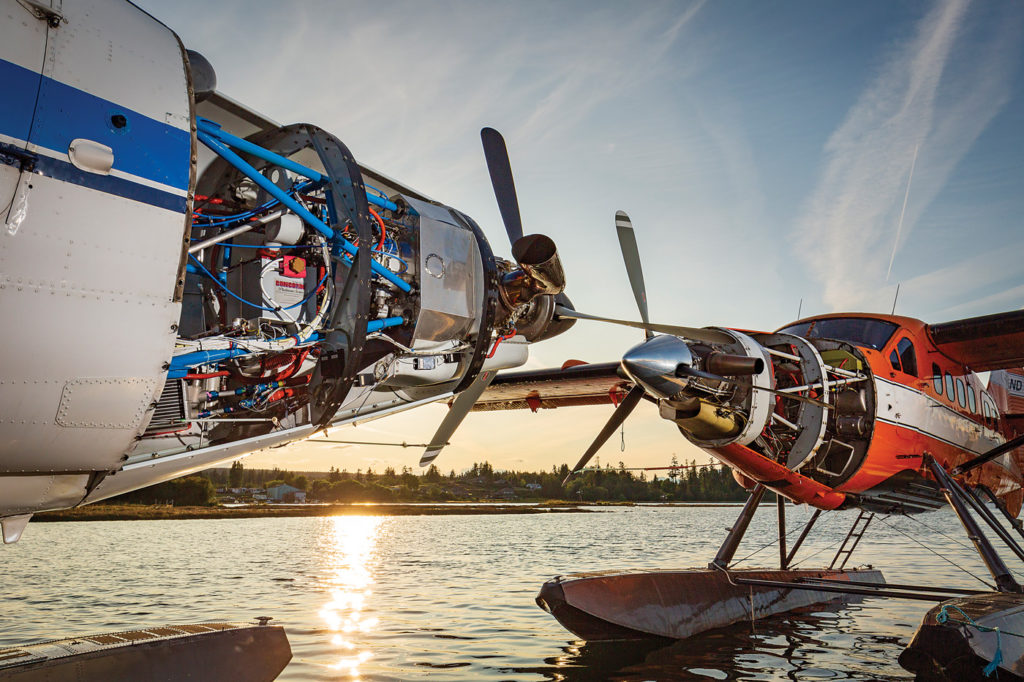
Need a bushplane? Build it
De Havilland Canada’s Downsview, Ont., factory built 466 Otters between 1951 and 1967; an accomplishment that amply demonstrated the merits of the original design. By 2019, however, making a profit behind a radial engine is increasingly impractical, and avgas is often unavailable in the bush.
Fortunately, a cottage industry arose to service the needs of bushplane operators and their aging aircraft, providing spare parts and product improvements that have kept the Otter viable.
New from the factory, the Otter was powered by a good ol’ Pratt & Whitney Canada (P&WC) R-1340 radial piston engine.
The prospect of installing a turbine engine on the Otter is hardly revolutionary. Over the years, at least four companies have certified various turbine engines in the Otter; however, most vendors have left the market as the number of flying Otters has dwindled.
Typical Turbine Otter installations feature P&WC PT6A-34 or -135 engines; variants of a popular and well-proven design, widely renowned for its reliability. Other installations have featured the Garrett/Honeywell TPE331 or the Czech-designed Walter 601 turbine.
VIA took another path.
Josi Billinghurst, VIA’s director of maintenance, described the rationale that led the company to embark upon certification of a different engine. VIA operates two Turbine Otters, one of which was coming due for an engine overhaul. Available options would take months, and, he explained, an airline with a fleet of two aircraft could hardly afford to ground one indefinitely.
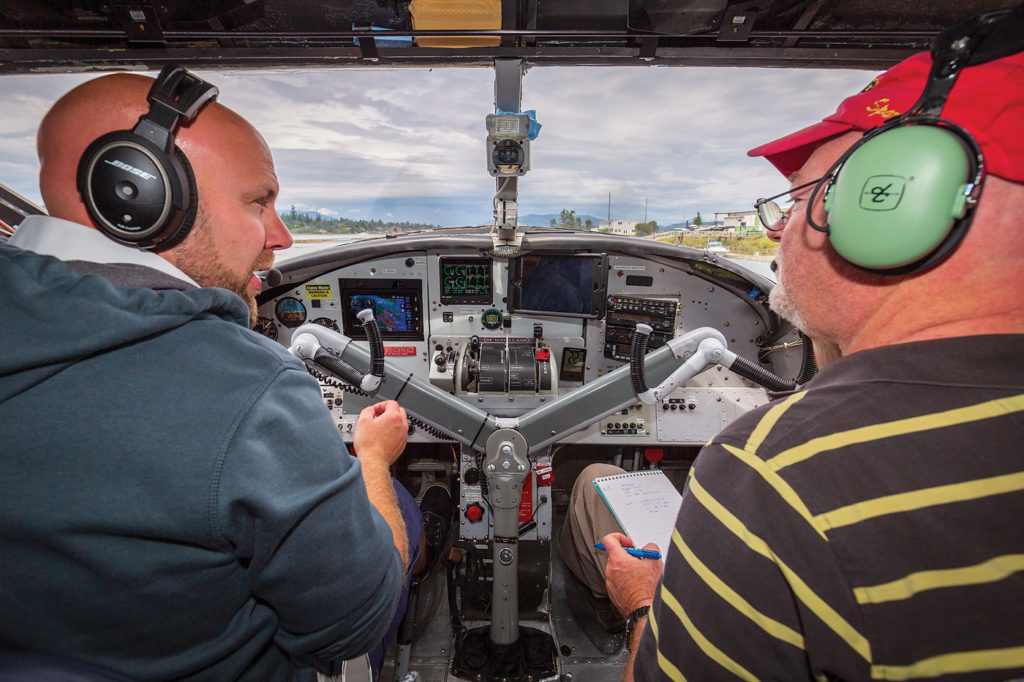
They called P&WC, shopping for an engine.
“If you want a PT6, you’ll want the -140A,” they were apparently told, as the newer engine variant was more efficient. Of course, VIA would have to certify the installation; never a trivial process, but made somewhat easier by the similarity to existing Turbine Otter powerplants.
“So, you’re telling me,” I interrupted Billinghurst, “that you have two Otters, both powered by PT6 engines, and one airplane is both faster and more fuel efficient than the other?”
He nodded. His statement wasn’t impossible, but my skepticism alarm was ringing loudly.
Billinghurst explained that the -140A engine is a newer variant, originally certified for the Cessna Grand Caravan EX, which includes a larger impeller and compressor, more efficient fuel nozzles and a different hot section, using improved power turbine blades. The result, according to Pratt & Whitney Canada, is an engine that can run hotter, with better fuel atomization, yielding improved fuel efficiency.
The fact that the -140A engine was also more powerful was icing on the cake. In addition, VIA contended that their -140A-powered Otter handled better, owing to a subtle realignment of the engine thrust line. Faster, more efficient and better handling? Clearly, some proof was warranted.
Suddenly, I better understood VIA’s demonstration plan: I would test fly their “new” Otter fitted with the 900-horsepower PT6A-140A engine, registration C-GVIX, after which I would fly their other Otter, C-FQND, with the more common 750-horsepower PT6A-34 engine. Both airplanes would be ballasted to the same weight and balance, and flown under comparable conditions, providing a direct comparison.
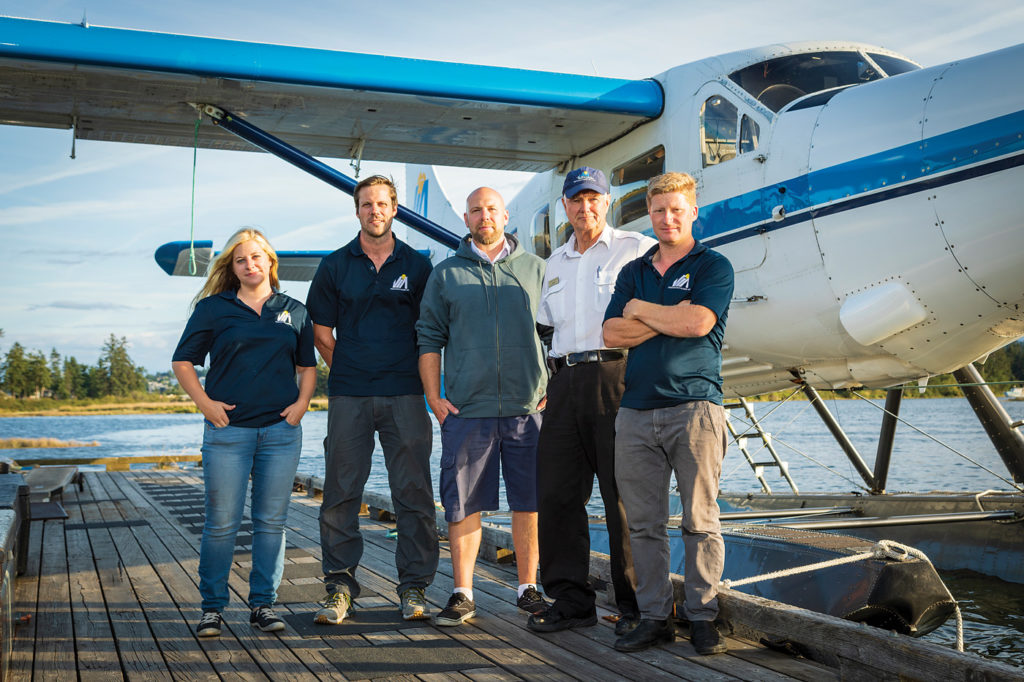
Flying is believing
What could be better than taking a floatplane up to beautiful Desolation Sound on a sunny summer day? It was my privilege to fly with VIA’s chief pilot, Steve Crerar, whose decades of float flying made him well qualified to be my adult supervision in the world of liquid runways.
Our flights in the Turbine Otter would occur at sea level – quite literally – with 23C temperatures and light winds. Both ships were at a light weight, having been ballasted to a gross weight of 7,158 pounds, with the centre of gravity 16.2 inches aft of the datum.
Once settled into the cockpit, Crerar gave me a quick tour, but the Turbine Otter’s cockpit is so simple that he almost needn’t have bothered. The power controls consisted of the traditional quadrant containing throttle, propeller and condition levers, plus a small additional lever for the emergency fuel control. The engine “gauges” consisted of a single Electronics International MVP-50T digital display, nicely configured to depict engine, fuel and electrical status at a glance.
Crerar had the Otter turning and taxiing within 45 seconds of selecting the master switch; a good test of an airplane’s bush utility. Pre-flight checks consisted only of a propeller governor test, performed on the first flight of the day.
Regulating taxi speed was easy; just a simple matter of finding the “sweet spot” on the throttle’s BETA range. Taxiing was quieter in low idle (55% Ng), but the trade-off was a slower throttle response. High idle (72% Ng) provides the option of faster throttle response, but a higher taxi speed.

Crerar demonstrated the first takeoff from Campbell River’s scenic floatplane aerodrome, the airplane configured with flaps set to half, trims set, water rudders retracted. As Crerar slowly advanced the power, I started counting. We were airborne, and beginning to retract the flaps within 10 seconds. My only criticism, typical of most PT6 engine installations, was the sensitivity of the throttle, requiring one eye on the torque metre to avoid a brief surprise.
Our 110 mile per hour (mph) cruise-climb rewarded us with an observed 1,700 foot per minute rate of climb, albeit in a very light aircraft. We climbed to 2,500 feet in search of smooth air for our next, critical test.
I once had a teacher who would stomp his feet when he was discussing something that would appear on the exam. Here is my “foot stomper” from our flight: With the -140A engine, VIX was indeed both faster and more fuel efficient than QND. In VIX, with the -140A engine, I carefully stabilized our speed at 120 mph. The resulting fuel flow indicated 290 pounds per hour.
Later repeated in QND under comparable conditions, fuel flow was 335 pounds per hour. Alternatively, as a belt-and-suspenders comparison, we precisely set 310 pounds per hour fuel flow. QND delivered 116 mph, while VIX rewarded us with 129 mph. Of course, airspeed and fuel flow calibrations may contribute to the difference, as would other factors, but VIA’s claims were vindicated.
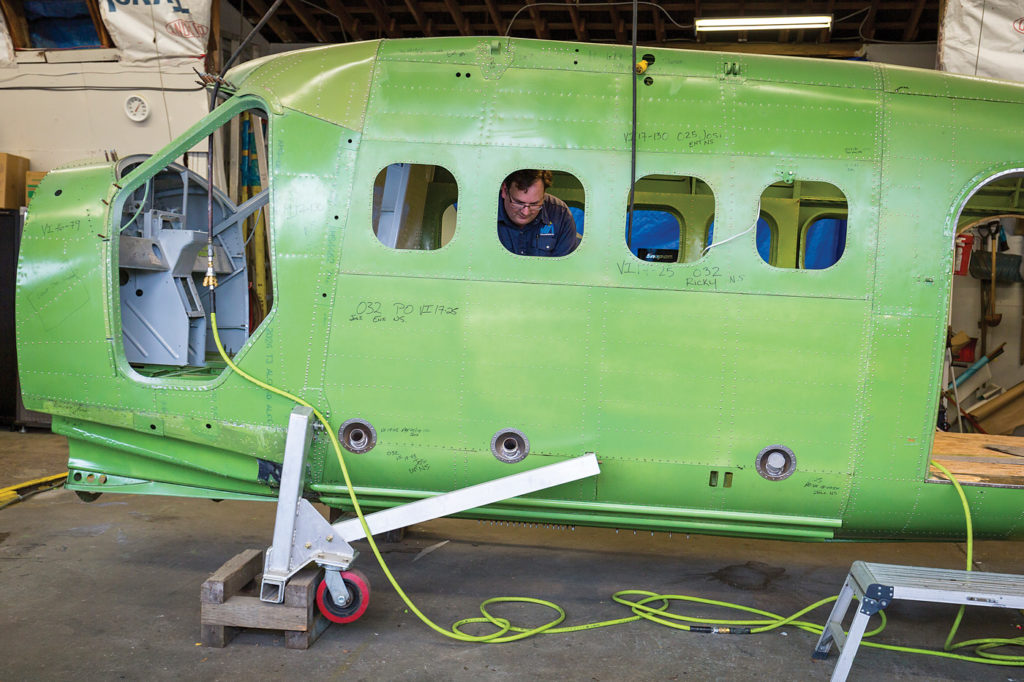
We descended to the water for some circuits. During one approach, Crerar demonstrated their Otter’s steep approach capabilities. With the throttle at idle, and full-flap selected, our stabilized rate of descent was about 1,900 feet per minute at 80 mph. Crerar pulled the engine condition lever to the low idle position, and the increase in propeller drag left us with a satisfyingly steep 2,600 foot-per-minute rate of descent; a very useful feature on a bush airplane. I hope this option remains available on the certified version.
Having survived a few circuits without event, it’s timely to offer a few comments about the Otter’s handling. If you’re expecting terms like “responsive,” “crisp,” or “agile,” there will be disappointment.
The Otter flies like a truck. Its controls are rather heavy and sluggish. The adverse yaw is eye-opening. In short, it’s a superb bushplane, for the same reason that pick-up trucks make terrible race cars. Some designs are all about utility, and the Otter was designed as a no-frills working machine.
I almost forgot one more thing: 900 horsepower of performance! If you recall, I was to have the opportunity to fly VIA’s “other” Turbine Otter, and what could be a better back-to-back comparison than a photo formation flight?

I climbed aboard QND, again with Steve Crerar, and attempted to stay glued to VIX’s wing through several formation takeoffs and landings. VIA president and resident Otter expert Larry Langford, flying VIX, had 900 HP at his disposal, while I was making do with more conventional Turbine Otter performance. The results were impressive. Larry was airborne two to three seconds before us in every case, and was typically retracting flaps by the time we were aloft. Point made.
Something else was evident during our formation flight in QND: I was busier!
Crerar had warned me that the alignment of the propeller thrust line – a propeller offset of -5.5 degrees having been originally certified in QND – would influence handling. Many aircraft benefit from a thrust line offset, but VIA believes that the Otter is not among them.
Going around the circuit, ostensibly glued to VIX’s wing in echelon formation, QND left me labouring with a sudden need to trim whenever power, speed or configuration changed. VIX, with VIA’s proprietary engine mount design, was indeed subtly more pleasant to fly. Point made. Again.
Certified – almost
To address the critical shortage of Otter parts, VIA created a subsidiary, AeroTech Industries. It’s an approved maintenance organization (AMO) that has certified a strategic selection of replacement parts intended to ensure the company’s Otters stay airborne, while keeping the growing list of age-related Airworthiness Directives at bay.
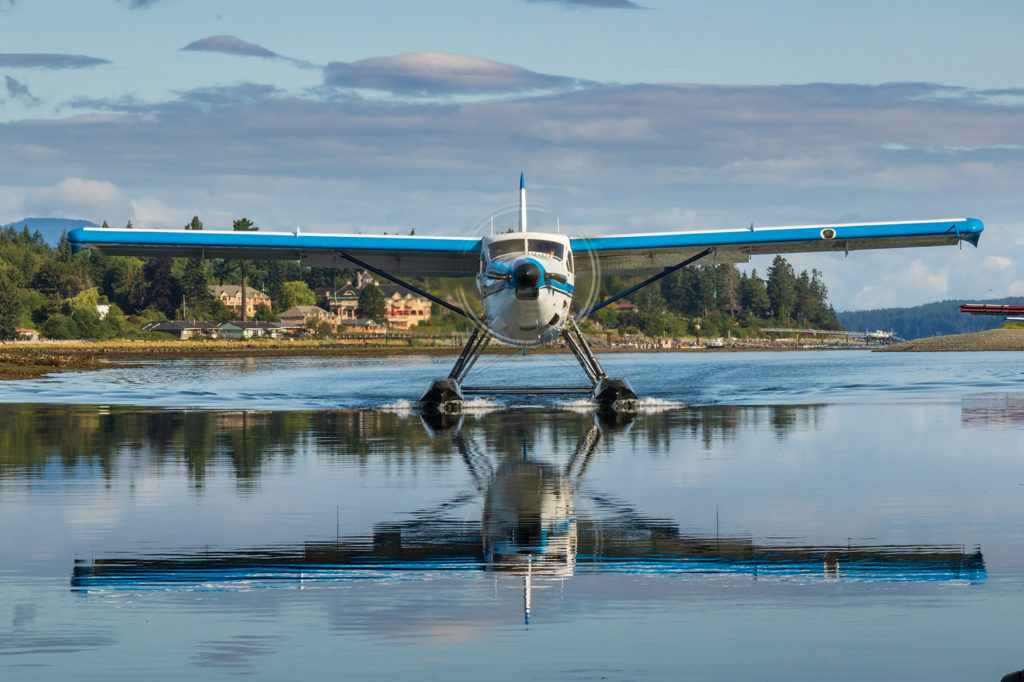
It’s 2019. Skeptics will contend that even with enhanced performance, better fuel efficiency and improved handling, the Otter is still an inherently elderly airframe.
VIA is working on a solution to that, too, in the form of Otter serial number 82, an ex-U.S. Army machine the company found in Vietnam. It is being used as proof-of-concept for AeroTech Industries’ “Otter Revitalization Program,” which is intended to “zero time” the airframe.
If that sounds easy, understand that the process requires the disassembly of the airframe, documentation of its conformance with the original type design, and installation of new metal where mandated.
Vancouver Island Airways isn’t shy of accepting a challenge, and has good reason to think that the best bushplane for their mission is an Otter, and that the best Otter is a brand new one.
Robert Erdos is a contributing editor for Skies magazine. He is a graduate of the U.S. Naval Test Pilot School and a retired professional test pilot. Also an aviation enthusiast, his spare time activites include displaying vintage airplanes and flying his RV-6 kitplane.
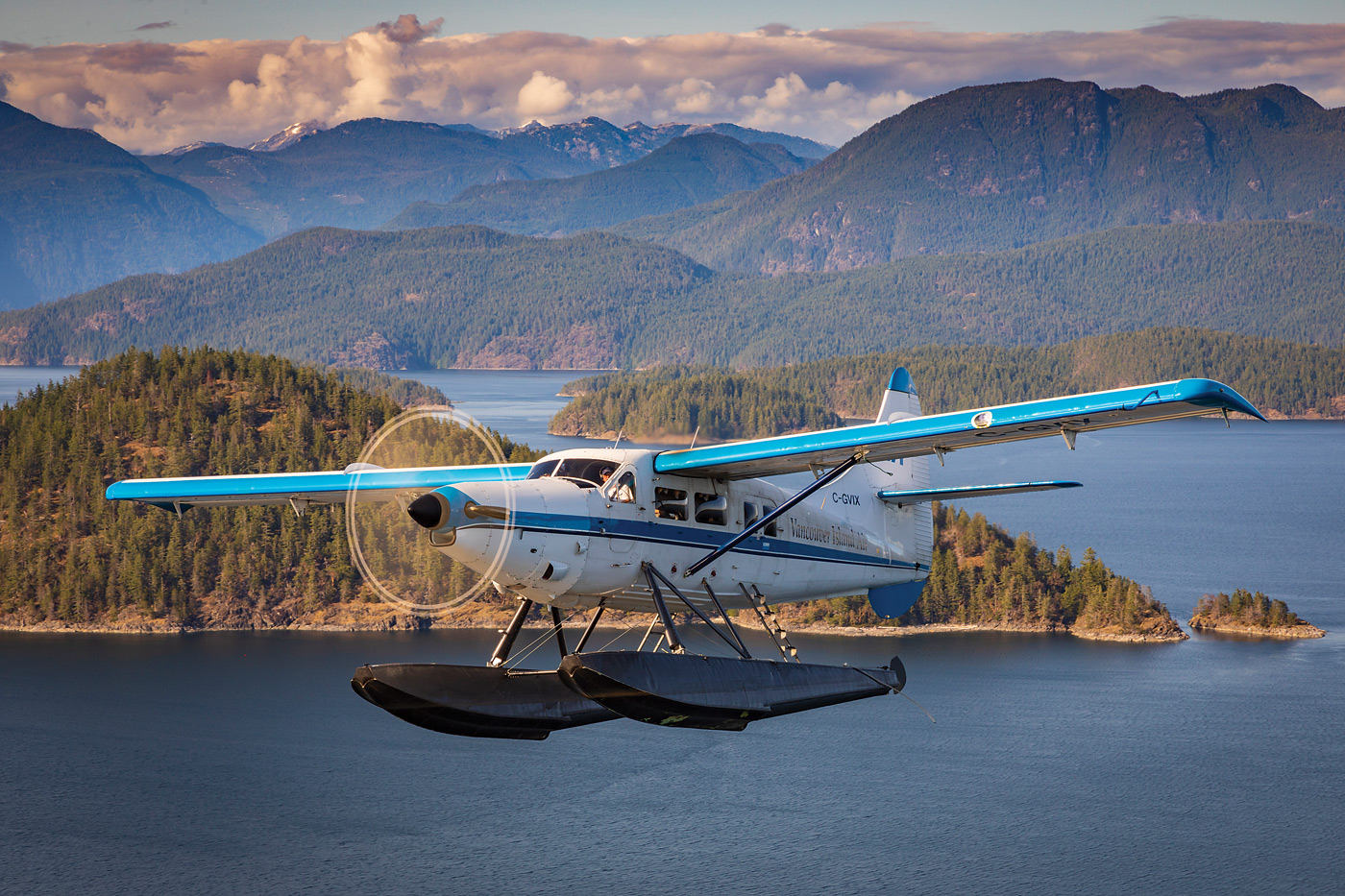

awsome i wish i was 20 years younger i have roughly 12,000 hrs. in the singje otter on wheels skis and floats,and about 5,000 hrs.on the beaver,and 3,000 hrs.on the rest of the planes i flew